| View previous topic :: View next topic |
| Author |
Message |
immortalblue
Joined: 30 Nov 2015
Posts: 25
|
 Posted: Thu Feb 18, 2016 10:18 pm Post subject: Top Landscape Photos with Telephoto prime lens 135/180/200.. Posted: Thu Feb 18, 2016 10:18 pm Post subject: Top Landscape Photos with Telephoto prime lens 135/180/200.. |
 |
|
immortalblue wrote:
Hi
I would like to know your point of vue about one question if it is possible.
I have a camera with a multiplying factor of 1.5 (this will influence this question)
I'm currently using wide angle for my landscape photography and I'm also using longest lenses, like one 90mm
I would like to know if you have an opinion on the long lenses for landscape photography
By long I have theses one in mind theses days for example :
135mm
180mm
200mm
and as we speak about all this maybe it could even be interesting to speak about 300mm even if now I have big Doubts ahaha.
This question is ONLY related to landscape photography
For the moment I am ONLY impressed by this type of picture:
- Photos with landscapes of hill (usually with fog / haze it is even better)
I find that the crushing of differents plans take all its interest
- some sunrises
nothing else=) thats why I had created this topic, and as soon as I time I will look at some pictures to illustrate this topic
thanks a lot for sharing your point of vue!!
PS:sorry for my approximative english level =) |
|
| Back to top |
|
 |
ahblack
Joined: 07 May 2015
Posts: 27
Location: Singapore
|
 Posted: Fri Feb 19, 2016 2:43 am Post subject: Posted: Fri Feb 19, 2016 2:43 am Post subject: |
 |
|
ahblack wrote:
I don't have much experience in doing Landscape with a tele lens, but I have some friends who have been doing it for quite a while. It's quite refreshing, as the usual UWA landscape is like squeezing everything in a frame, while using tele lens flattens everything. The challenge is different though, as you really need certain height and distance to make it works. As for the composition, usually works well when you have layers and layers of object to play with.
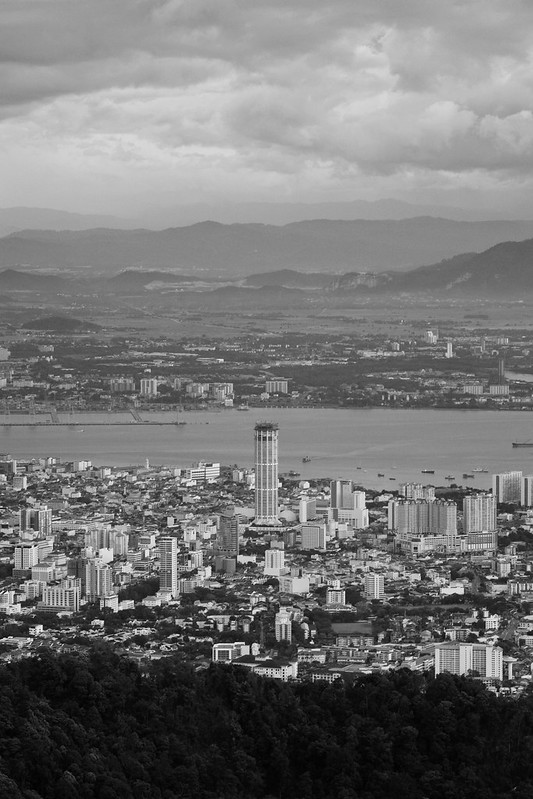
The Pearl of The Orient by Lee Wooi Chun, on Flickr
I did this when I was back in my hometown, Penang. Vantage point from Penang Hill, using CZJ Sonnar 135mm f3.5 (on FF, so works about the same like your 90mm on crop). Might not be the best example (to be honest, this is my one and only landscape shot with tele lens haha...), but you can get the idea of "layers".
_________________
Sony A7ii | CV15iii | Batis 25 | Zeiss Sonnar 50ZM | CZJ S 135
https://www.flickr.com/photos/b1ack/ |
|
| Back to top |
|
 |
bernhardas

Joined: 01 Jan 2013
Posts: 1437
Expire: 2017-05-23
|
 Posted: Fri Feb 19, 2016 3:03 am Post subject: Posted: Fri Feb 19, 2016 3:03 am Post subject: |
 |
|
bernhardas wrote:
edited
Last edited by bernhardas on Sat Apr 09, 2016 5:51 am; edited 2 times in total |
|
| Back to top |
|
 |
visualopsins


Joined: 05 Mar 2009
Posts: 10543
Location: California
Expire: 2025-04-11
|
 Posted: Fri Feb 19, 2016 4:06 am Post subject: Posted: Fri Feb 19, 2016 4:06 am Post subject: |
 |
|
visualopsins wrote:
To review:
Wide angle makes details smaller, distances bigger, spreads landscape away from camera. Use Wide angle for landscape with a lot of closeby details, or, to take advantage of perspective distortion.
Telephoto makes details bigger, distances smaller, squeezes landscape toward camera. Use telephoto for landscape for a lot of far away details, or, to take advantage of perspective distortion.
Normal lens shows details & distances in proper proportion.
My preference for landscapes is the normal lens, 'normal' as defined here: http://forum.mflenses.com/earth-is-round-earth-is-flat-t74137,start,28.html
135mm:
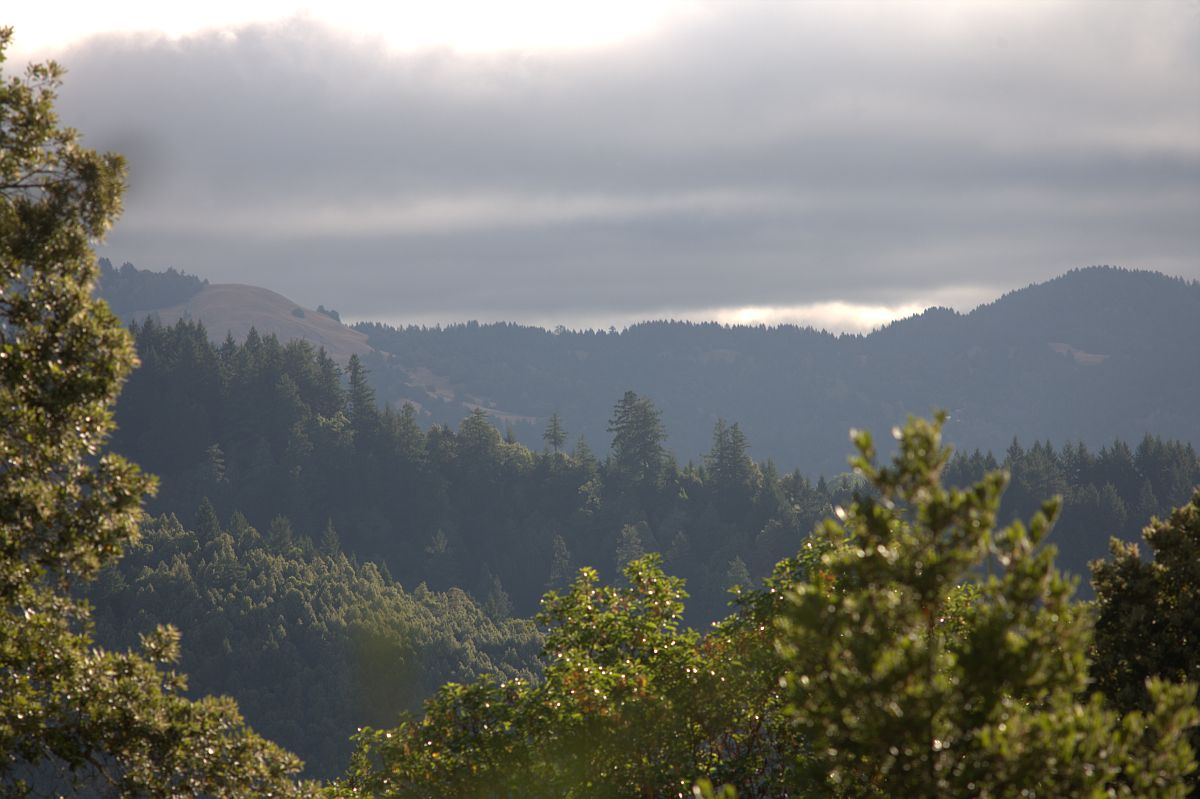
17mm:

50mm:

_________________
☮☮☮☮☮☮☮☮☮☮☮☮☮☮☮☮☮☮☮☮☮☮☮☮☮☮☮☮☮☮☮☮ like attracts like! ☮☮☮☮☮☮☮☮☮☮☮☮☮☮☮☮☮☮☮☮☮☮☮☮☮☮☮☮☮☮☮☮
Cameras: Sony ILCE-7RM2, Spotmatics II, F, and ESII, Nikon P4
Lenses:
M42 Asahi Optical Co., Takumar 1:4 f=35mm, 1:2 f=58mm (Sonnar), 1:2.4 f=58mm (Heliar), 1:2.2 f=55mm (Gaussian), 1:2.8 f=105mm (Model I), 1:2.8/105 (Model II), 1:5.6/200, Tele-Takumar 1:5.6/200, 1:6.3/300, Macro-Takumar 1:4/50, Auto-Takumar 1:2.3 f=35, 1:1.8 f=55mm, 1:2.2 f=55mm, Super-TAKUMAR 1:3.5/28 (fat), 1:2/35 (Fat), 1:1.4/50 (8-element), Super-Multi-Coated Fisheye-TAKUMAR 1:4/17, Super-Multi-Coated TAKUMAR 1:4.5/20, 1:3.5/24, 1:3.5/28, 1:2/35, 1:3.5/35, 1:1.8/85, 1:1.9/85 1:2.8/105, 1:3.5/135, 1:2.5/135 (II), 1:4/150, 1:4/200, 1:4/300, 1:4.5/500, Super-Multi-Coated Macro-TAKUMAR 1:4/50, 1:4/100, Super-Multi-Coated Bellows-TAKUMAR 1:4/100, SMC TAKUMAR 1:1.4/50, 1:1.8/55
M42 Carl Zeiss Jena Flektogon 2.4/35
Contax Carl Zeiss Vario-Sonnar T* 28-70mm F3.5-4.5
Pentax K-mount SMC PENTAX ZOOM 1:3.5 35~105mm, SMC PENTAX ZOOM 1:4 45~125mm
Nikon Micro-NIKKOR-P-C Auto 1:3.5 f=55mm, NIKKOR-P Auto 105mm f/2.5 Pre-AI (Sonnar), Micro-NIKKOR 105mm 1:4 AI, NIKKOR AI-S 35-135mm f/3,5-4,5
Tamron SP 17mm f/3.5 (51B), Tamron SP 17mm f/3.5 (51BB), SP 500mm f/8 (55BB), SP 70-210mm f/3.5 (19AH)
Vivitar 100mm 1:2.8 MC 1:1 Macro Telephoto (Kiron)
|
|
| Back to top |
|
 |
paulhofseth

Joined: 05 Mar 2011
Posts: 566
Location: Norway
Expire: 2018-06-28
|
 Posted: Fri Feb 19, 2016 10:32 am Post subject: collaterals Posted: Fri Feb 19, 2016 10:32 am Post subject: collaterals |
 |
|
paulhofseth wrote:
The longer the lens= the more sensitive to wind and vibration even on a tripod AND more to carry.
Hot weather= atmospheric distortion even with Apo-Telyt etc.
Moist air or airpollution= photogenic haze OR fuzzy distances OR redfilter\ monocolour from the red channel
Conclusion: borrow a telezoom and see what suits you.
p. |
|
| Back to top |
|
 |
immortalblue
Joined: 30 Nov 2015
Posts: 25
|
 Posted: Fri Feb 26, 2016 3:44 pm Post subject: Posted: Fri Feb 26, 2016 3:44 pm Post subject: |
 |
|
immortalblue wrote:
thanks for your reply
currenly I had found this video, of Mr Andreas Feininger, and it is really interesting cause he is used to shoot with telelenses in city =)
https://www.youtube.com/watch?v=7Iby7p7BN-k |
|
| Back to top |
|
 |
visualopsins


Joined: 05 Mar 2009
Posts: 10543
Location: California
Expire: 2025-04-11
|
 Posted: Fri Feb 26, 2016 4:39 pm Post subject: Posted: Fri Feb 26, 2016 4:39 pm Post subject: |
 |
|
visualopsins wrote:
Another way to use telephoto for landscape is making panoramas by stitching together adjacent photos...
Mflenses member NikonD has posted some fine stitched panoramas of landscapes in his beautiful country -- I remember in particular photo of mountain showing incredible detail! Search for posts by NikonD
_________________
☮☮☮☮☮☮☮☮☮☮☮☮☮☮☮☮☮☮☮☮☮☮☮☮☮☮☮☮☮☮☮☮ like attracts like! ☮☮☮☮☮☮☮☮☮☮☮☮☮☮☮☮☮☮☮☮☮☮☮☮☮☮☮☮☮☮☮☮
Cameras: Sony ILCE-7RM2, Spotmatics II, F, and ESII, Nikon P4
Lenses:
M42 Asahi Optical Co., Takumar 1:4 f=35mm, 1:2 f=58mm (Sonnar), 1:2.4 f=58mm (Heliar), 1:2.2 f=55mm (Gaussian), 1:2.8 f=105mm (Model I), 1:2.8/105 (Model II), 1:5.6/200, Tele-Takumar 1:5.6/200, 1:6.3/300, Macro-Takumar 1:4/50, Auto-Takumar 1:2.3 f=35, 1:1.8 f=55mm, 1:2.2 f=55mm, Super-TAKUMAR 1:3.5/28 (fat), 1:2/35 (Fat), 1:1.4/50 (8-element), Super-Multi-Coated Fisheye-TAKUMAR 1:4/17, Super-Multi-Coated TAKUMAR 1:4.5/20, 1:3.5/24, 1:3.5/28, 1:2/35, 1:3.5/35, 1:1.8/85, 1:1.9/85 1:2.8/105, 1:3.5/135, 1:2.5/135 (II), 1:4/150, 1:4/200, 1:4/300, 1:4.5/500, Super-Multi-Coated Macro-TAKUMAR 1:4/50, 1:4/100, Super-Multi-Coated Bellows-TAKUMAR 1:4/100, SMC TAKUMAR 1:1.4/50, 1:1.8/55
M42 Carl Zeiss Jena Flektogon 2.4/35
Contax Carl Zeiss Vario-Sonnar T* 28-70mm F3.5-4.5
Pentax K-mount SMC PENTAX ZOOM 1:3.5 35~105mm, SMC PENTAX ZOOM 1:4 45~125mm
Nikon Micro-NIKKOR-P-C Auto 1:3.5 f=55mm, NIKKOR-P Auto 105mm f/2.5 Pre-AI (Sonnar), Micro-NIKKOR 105mm 1:4 AI, NIKKOR AI-S 35-135mm f/3,5-4,5
Tamron SP 17mm f/3.5 (51B), Tamron SP 17mm f/3.5 (51BB), SP 500mm f/8 (55BB), SP 70-210mm f/3.5 (19AH)
Vivitar 100mm 1:2.8 MC 1:1 Macro Telephoto (Kiron)
|
|
| Back to top |
|
 |
WNG555


Joined: 18 Dec 2014
Posts: 784
Location: Arrid-Zone-A, USA
|
 Posted: Fri Feb 26, 2016 8:01 pm Post subject: Posted: Fri Feb 26, 2016 8:01 pm Post subject: |
 |
|
WNG555 wrote:
I believe it all depends on your composition. Landscapes are a personal favorite and I've used everything from 8mm fisheye to 500mm telephoto.
As mentioned above, one underlying fact is our eyes' normal view seems to be the most pleasant FOV... I personally gravitate towards 24mm or 28mm for APS-C.
They yield a 35-43mm range respectively. And a digital stitch of shots should make for a very accurate pano landscape of what our eyes perceive.
On full frame, a 35-45mm prime is applicable.
_________________
"The eyes are useless when the mind is blind."
Sony ILCE-6000, SELP1650, SEL1855, SEL55210, SEL5018. Sigma 19/30/60mm f2.8 EX DN Art.
Rokinon 8mm f3.5 Fish-Eye, 14mm f2.8 IF ED UMC. Samyang 12mm f2.8 ED AS NCS Fish-Eye.
And a bunch of Manual-Focus Lenses
My Flickr |
|
| Back to top |
|
 |
cooltouch


Joined: 15 Jan 2009
Posts: 9097
Location: Houston, Texas
|
 Posted: Sat Feb 27, 2016 1:08 am Post subject: Posted: Sat Feb 27, 2016 1:08 am Post subject: |
 |
|
cooltouch wrote:
It all depends on what you're after, really. I've used some very long lenses for "scapes" in order to focus in on particular details I was after, or to magnify the size of the sun in a shot. I've also used some very wide lenses for their rather obvious abilities. It just all depends.
Here are a few shots I took with a 600mm Sigma mirror telephoto. Most of these shots are dupes of old slides and I haven't cloned out all the dust spots yet.
Just the sun at sunset. I think I had a 2x TC added for this shot, so 1200mm. Canon F-1, Kodachrome 64:

A ship and a sailboat offshore at Waikiki, Hawaii. Canon FTb, Kodachrome 64:

Los Angelese Skyline at sunrise, circa 1986. Canon F-1, Kodachrome 64:

West Los Angeles Skyline in B&W. Canon F-1, Tri-X:

An offshore platform, somewhere off the Southern California coast. Canon A-1, Kodachrome 64:

This shot was taken with a Century Precision Optics 500mm f/5.6 telephoto -- a very sharp lens. Sierra Nevada Mountains in eastern California. Nikon F2, Fujichrome 100:

I'd like to make a comment about the Sigma 600mm mirror I used for the above photos. I bought it in 1984, so it was an early version. Sigma made it at least until the late 1980s -- I know this because I have one in EOS mount. The one I bought in 1984 was a tack-sharp optic. Easily as good as the Tamron 55BB 500mm I own now, and that Tamron is one of the sharpest telephotos I own. But the later model one in EOS mount I own isn't nearly as good as the early one I used to own. So there must have been some considerable variability in quality control at Sigma when it came to these 600s. And apparently it wasn't just the case of the early ones being better than the later ones. There was an informative thread here some months back where members with various models reported on how their Sigma 600s performed. Some were good -- even excellent. Some, well, not so. And it didn't seem to matter much when the lens was made.
So this is just a caveat emptor to anyone who's thinking of buying one. Buy it from a party who offers a return policy, and then try it out as soon as you get it. If it doesn't deliver the results you were hoping for, then send it back. If it does, well, then congratulations! Oh, and one thing I also have to mention -- it took me quite a while to get the hang of shooting with that optic. For the first several months I owned it, I was convinced I'd bought a turkey. Most all of the photos I took with it were awful. But as I gradually became more in tune with its requirements, my shots improved. I started doing things like using an extra stout tripod, a shutter release, and a camera with mirror lock-up. I even bought an eyepiece magnifier to hep me nail focus. Eventually, once I got the hang of using it, I was able to dispense with using things like the eyepiece magnifier and even mirror lock-up if the shutter speed was high enough (1//500 or faster, even on a tripod). I even got to the point where I was using it with a monopod and panning with it at auto races. So, if you think you got a good one, hang in there -- its capabilities will come to you as you use it more.
_________________
Michael
My Gear List: http://michaelmcbroom.com/photo/gear.html
My Gallery: http://michaelmcbroom.com/gallery3/index.php/
My Flickr Page: https://www.flickr.com/photos/11308754@N08/albums
My Music: https://soundcloud.com/michaelmcbroom/albums
My Blog: http://michaelmcbroom.com/blogistan/ |
|
| Back to top |
|
 |
hpmickey


Joined: 09 Nov 2011
Posts: 55
Location: Czechia
|
 Posted: Sun Feb 28, 2016 10:00 am Post subject: Posted: Sun Feb 28, 2016 10:00 am Post subject: |
 |
|
hpmickey wrote:
Hello,
I live in a hilly country and I have found especially the 135mm length to be useful for landscape photos taken from the slope at one side of the valley, directed to the other side. Here are two foggy sunsets taken with Super-Multi-Coated Takumar 135/3.5:
#1

#2

I also use this lens to take details of the opposite slope at places where the valley gets narrower:
#3

I have the 200/5.6 Takumar as well but I do not use it for landscape that often. The air thermal vibrations and air pollution became a problem at this focal length.
Michal |
|
| Back to top |
|
 |
visualopsins


Joined: 05 Mar 2009
Posts: 10543
Location: California
Expire: 2025-04-11
|
 Posted: Sun Feb 28, 2016 4:21 pm Post subject: Posted: Sun Feb 28, 2016 4:21 pm Post subject: |
 |
|
visualopsins wrote:
Beautiful country hpmickey!
_________________
☮☮☮☮☮☮☮☮☮☮☮☮☮☮☮☮☮☮☮☮☮☮☮☮☮☮☮☮☮☮☮☮ like attracts like! ☮☮☮☮☮☮☮☮☮☮☮☮☮☮☮☮☮☮☮☮☮☮☮☮☮☮☮☮☮☮☮☮
Cameras: Sony ILCE-7RM2, Spotmatics II, F, and ESII, Nikon P4
Lenses:
M42 Asahi Optical Co., Takumar 1:4 f=35mm, 1:2 f=58mm (Sonnar), 1:2.4 f=58mm (Heliar), 1:2.2 f=55mm (Gaussian), 1:2.8 f=105mm (Model I), 1:2.8/105 (Model II), 1:5.6/200, Tele-Takumar 1:5.6/200, 1:6.3/300, Macro-Takumar 1:4/50, Auto-Takumar 1:2.3 f=35, 1:1.8 f=55mm, 1:2.2 f=55mm, Super-TAKUMAR 1:3.5/28 (fat), 1:2/35 (Fat), 1:1.4/50 (8-element), Super-Multi-Coated Fisheye-TAKUMAR 1:4/17, Super-Multi-Coated TAKUMAR 1:4.5/20, 1:3.5/24, 1:3.5/28, 1:2/35, 1:3.5/35, 1:1.8/85, 1:1.9/85 1:2.8/105, 1:3.5/135, 1:2.5/135 (II), 1:4/150, 1:4/200, 1:4/300, 1:4.5/500, Super-Multi-Coated Macro-TAKUMAR 1:4/50, 1:4/100, Super-Multi-Coated Bellows-TAKUMAR 1:4/100, SMC TAKUMAR 1:1.4/50, 1:1.8/55
M42 Carl Zeiss Jena Flektogon 2.4/35
Contax Carl Zeiss Vario-Sonnar T* 28-70mm F3.5-4.5
Pentax K-mount SMC PENTAX ZOOM 1:3.5 35~105mm, SMC PENTAX ZOOM 1:4 45~125mm
Nikon Micro-NIKKOR-P-C Auto 1:3.5 f=55mm, NIKKOR-P Auto 105mm f/2.5 Pre-AI (Sonnar), Micro-NIKKOR 105mm 1:4 AI, NIKKOR AI-S 35-135mm f/3,5-4,5
Tamron SP 17mm f/3.5 (51B), Tamron SP 17mm f/3.5 (51BB), SP 500mm f/8 (55BB), SP 70-210mm f/3.5 (19AH)
Vivitar 100mm 1:2.8 MC 1:1 Macro Telephoto (Kiron)
|
|
| Back to top |
|
 |
TrueLoveOne


Joined: 30 Sep 2012
Posts: 1840
Location: Netherlands
Expire: 2013-12-24
|
 Posted: Sun Feb 28, 2016 4:59 pm Post subject: Posted: Sun Feb 28, 2016 4:59 pm Post subject: |
 |
|
TrueLoveOne wrote:
I used to shoot landscapes with a 135mm on a crop Sony DSLR. I should go out and do it again i think!
Both taken with Pentacon 2.8/135, second cropped to a panoview, both were for sale as a tourist postcard here in my region:
 Morning light by René Maly, on Flickr Morning light by René Maly, on Flickr
 A morning in autumn by René Maly, on Flickr A morning in autumn by René Maly, on Flickr
_________________
My Flickr photostream: http://www.flickr.com/photos/chantalrene/
Sony A7, Canon 5D mkII, Minolta 7D + RD3000 and some more.....
Minolta and Konica collector.... slowly selling all the other stuff! |
|
| Back to top |
|
 |
uhoh7

Joined: 24 Nov 2010
Posts: 1300
Location: Idaho, USA
|
 Posted: Tue Mar 01, 2016 8:13 pm Post subject: Posted: Tue Mar 01, 2016 8:13 pm Post subject: |
 |
|
uhoh7 wrote:
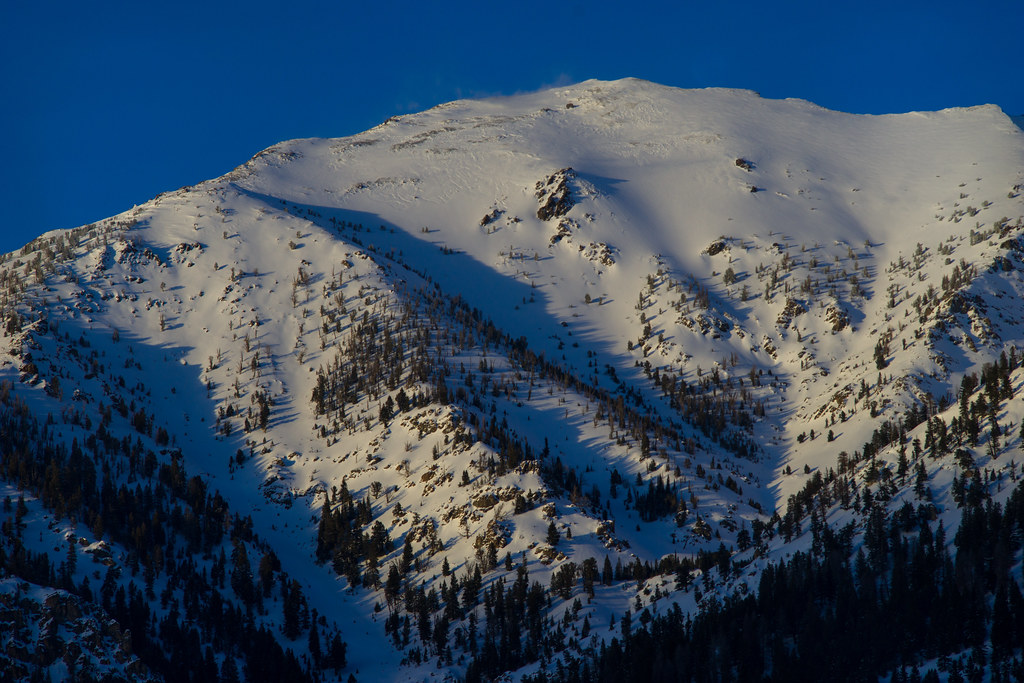
North Wind by unoh7, Nikkor 180/2.8 AIS ED
same:
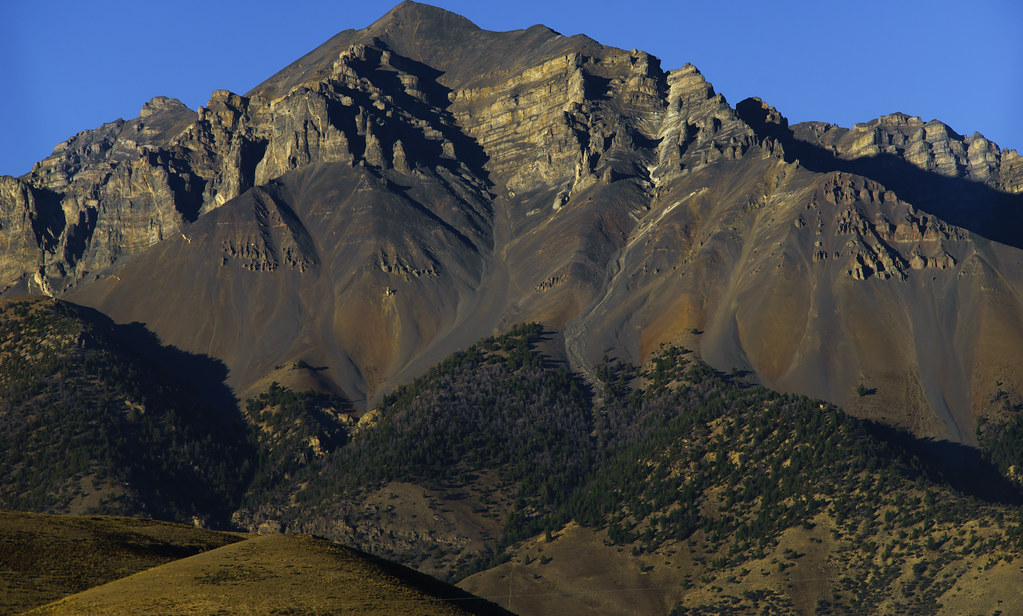
Mt Morrsion by unoh7, on Flickr
one more:
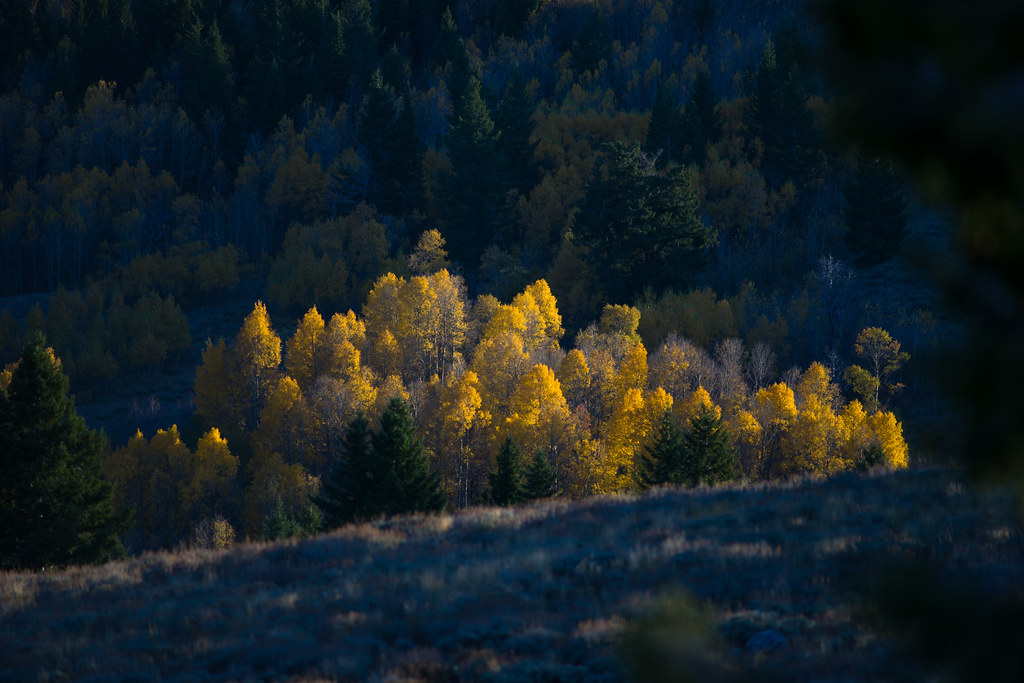
Last Flash by unoh7, on Flickr
_________________
Making MFlenses safe for the letter *L*  |
|
| Back to top |
|
 |
uhoh7

Joined: 24 Nov 2010
Posts: 1300
Location: Idaho, USA
|
 Posted: Tue Mar 01, 2016 8:24 pm Post subject: Posted: Tue Mar 01, 2016 8:24 pm Post subject: |
 |
|
uhoh7 wrote:
Here 135/3.4 Leica APO:
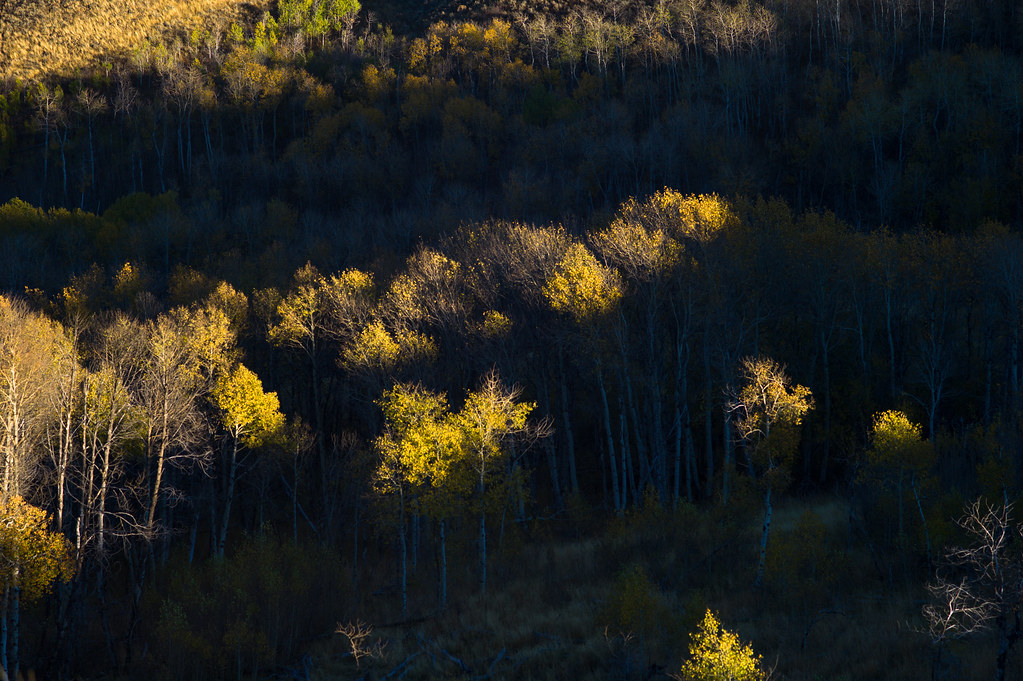
Yellow Flecks by unoh7, on Flickr

Boulder Knob by unoh7, on Flickr

Last Light by unoh7, on Flickr

High Folds by unoh7, on Flickr
_________________
Making MFlenses safe for the letter *L*  |
|
| Back to top |
|
 |
stevemark

Joined: 29 Apr 2011
Posts: 3754
Location: Switzerland
|
 Posted: Mon Mar 07, 2016 2:17 am Post subject: Posted: Mon Mar 07, 2016 2:17 am Post subject: |
 |
|
stevemark wrote:
Here are a few landscape images taken with 200mm and 300mm lenses.
#1
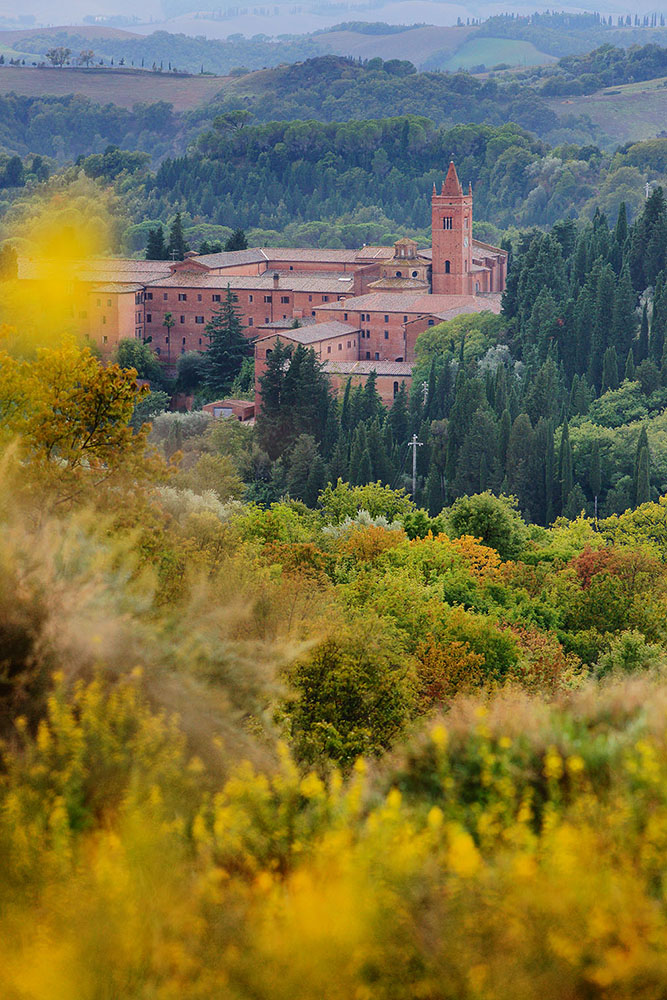 Monte Oliveto, Umbria, Italy. Taken with Minolta AF 2.8/200mm APO at f5.6 Monte Oliveto, Umbria, Italy. Taken with Minolta AF 2.8/200mm APO at f5.6
#2

Basilica of San Francesco at Assisi, Umbria, Italy. Minolta AF 2.8/200mm APO.
#3

Crete Senesi, Tuscany, Italy. Minolta AF 2.8/300mm APO.
#4
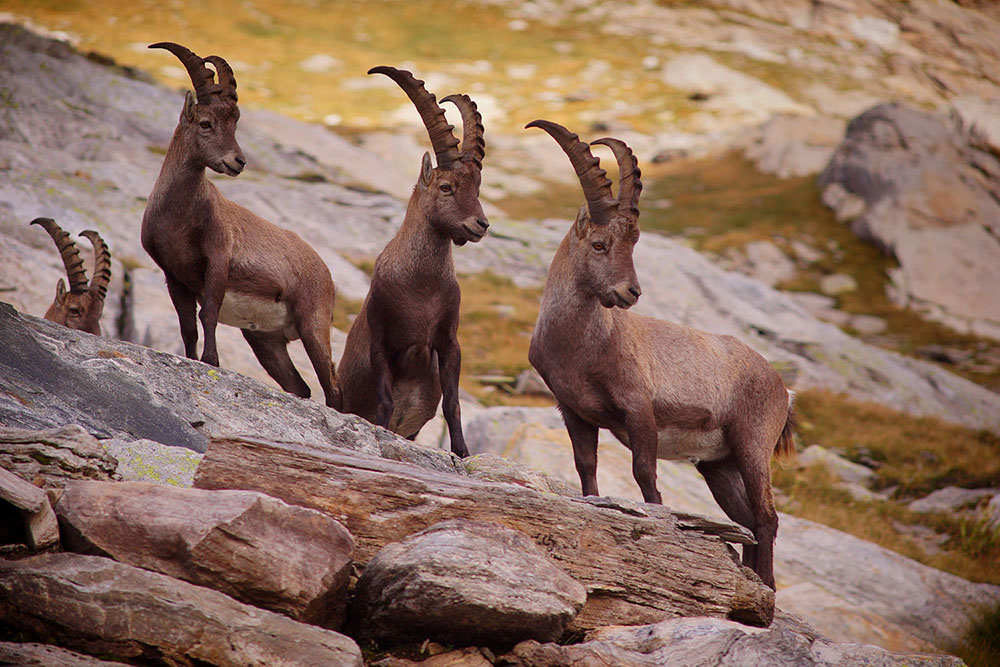
Alpine Ibexes. Gotthard, Switzerland. Minolta MD 4/200mm.
#5

Alpine Ibexes. Gotthard, Switzerland. Minolta MD 4/200mm.
#6

Pienza, Tuscany, Italy. Minolta AF 2.8/300mm APO.
#7
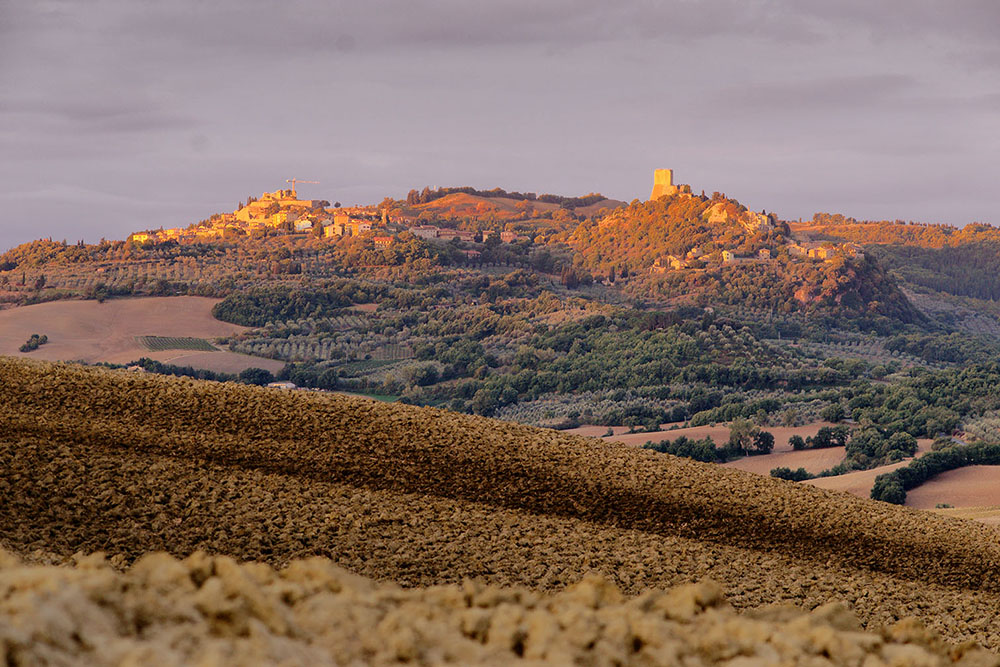
Rocca d'Orcia, Tuscany, Italy. Minolta AF 2.8/200mm APO.
#8

Val d'Orcia, Tuscany, Italy. Minolta AF 2.8/200mm APO.
#9

Crete Senesi. Tuscany, Italy. Minolta AF 2.8/300mm APO.
#10

Val d'Orcia, Tuscany, Italy. Minolta AF 2.8/200mm APO.
When doing landscape work, i usually take most pictures with just two lenses - the 20mm f2.8 and the 200mm f2.8 APO. That's all i really need. Occasionally i shall use a good midrange zoom (28-135mm f4-4.5) and a 2.8/300mm APO. When i'm inthe mountains i sometimes have a 400mm f4.5 or a 500mm f8 Mirror lens with me, but that's another story.
I hope you enjoy the images 
Stephan
_________________
www.artaphot.ch |
|
| Back to top |
|
 |
cooltouch


Joined: 15 Jan 2009
Posts: 9097
Location: Houston, Texas
|
 Posted: Mon Mar 07, 2016 4:40 pm Post subject: Posted: Mon Mar 07, 2016 4:40 pm Post subject: |
 |
|
cooltouch wrote:
I would love to travel to Tuscany one day. The light there just seems to be so special. I paint, too, so my time would probably be equally divided between photography and painting. It would be great to be able to spend like a month there -- have a chance to settle into the rhythm of the place and all.
_________________
Michael
My Gear List: http://michaelmcbroom.com/photo/gear.html
My Gallery: http://michaelmcbroom.com/gallery3/index.php/
My Flickr Page: https://www.flickr.com/photos/11308754@N08/albums
My Music: https://soundcloud.com/michaelmcbroom/albums
My Blog: http://michaelmcbroom.com/blogistan/ |
|
| Back to top |
|
 |
stevemark

Joined: 29 Apr 2011
Posts: 3754
Location: Switzerland
|
 Posted: Tue Mar 08, 2016 12:12 am Post subject: Posted: Tue Mar 08, 2016 12:12 am Post subject: |
 |
|
stevemark wrote:
| cooltouch wrote: |
| I would love to travel to Tuscany one day. The light there just seems to be so special. I paint, too, so my time would probably be equally divided between photography and painting. It would be great to be able to spend like a month there -- have a chance to settle into the rhythm of the place and all. |
That's a good idea. There are - especially in "low season" - quite a few so-called "agriturismi": You rent a room or even a flat in an farmhouse (they usually are extremely nice places). You can get everything - from "simple & clean" to "luxury", which - of course - has an influence on the price. I took these images last november, and i stayed in a flat with three rooms plus kitchen, situated in the ancient village of Rocca d'Orcia (see image above!). They charged me roughly 250 EUR for one week.
If you come from the US, i would rather advise you spend at least 2 weeks, if possible one month (1 week in Florence, which is a MUST, one week "in the field" (e. g. Val d'Orcia), one week in Assisi (the small town of s. Francis), and one week maybe near Florence in th Chianti hills.
Florence is a paradise for artists, and they have excellent ancient knowledge about painting / drawing. I used to know quite a few art students there 
Don't hesitate to ask question if you need more precise information.
Stephan
_________________
www.artaphot.ch |
|
| Back to top |
|
 |
cooltouch


Joined: 15 Jan 2009
Posts: 9097
Location: Houston, Texas
|
 Posted: Tue Mar 08, 2016 5:06 am Post subject: Posted: Tue Mar 08, 2016 5:06 am Post subject: |
 |
|
cooltouch wrote:
Thanks, Stephan. It's little more than a dream right now, but someday . . . and when that day comes, I'll be sure to look you up.
_________________
Michael
My Gear List: http://michaelmcbroom.com/photo/gear.html
My Gallery: http://michaelmcbroom.com/gallery3/index.php/
My Flickr Page: https://www.flickr.com/photos/11308754@N08/albums
My Music: https://soundcloud.com/michaelmcbroom/albums
My Blog: http://michaelmcbroom.com/blogistan/ |
|
| Back to top |
|
 |
WNG555


Joined: 18 Dec 2014
Posts: 784
Location: Arrid-Zone-A, USA
|
 Posted: Tue Mar 08, 2016 6:06 am Post subject: Posted: Tue Mar 08, 2016 6:06 am Post subject: |
 |
|
WNG555 wrote:
Truly breathtaking scenery! And great advice Stephan, thank you!
I hope to visit Europe by bike touring it for several months to half a year. I only visited Italy once, and promised myself an extended stay upon my return.
I hear Americans are only allowed 3 months in the EU as a tourist. I will have to figure out a way around it.
_________________
"The eyes are useless when the mind is blind."
Sony ILCE-6000, SELP1650, SEL1855, SEL55210, SEL5018. Sigma 19/30/60mm f2.8 EX DN Art.
Rokinon 8mm f3.5 Fish-Eye, 14mm f2.8 IF ED UMC. Samyang 12mm f2.8 ED AS NCS Fish-Eye.
And a bunch of Manual-Focus Lenses
My Flickr |
|
| Back to top |
|
 |
Analog lex


Joined: 10 Nov 2013
Posts: 95
Location: East Europe
|
 Posted: Tue Mar 08, 2016 10:47 pm Post subject: Posted: Tue Mar 08, 2016 10:47 pm Post subject: |
 |
|
Analog lex wrote:
CZJ Sonnar 135mm f4 Exakta
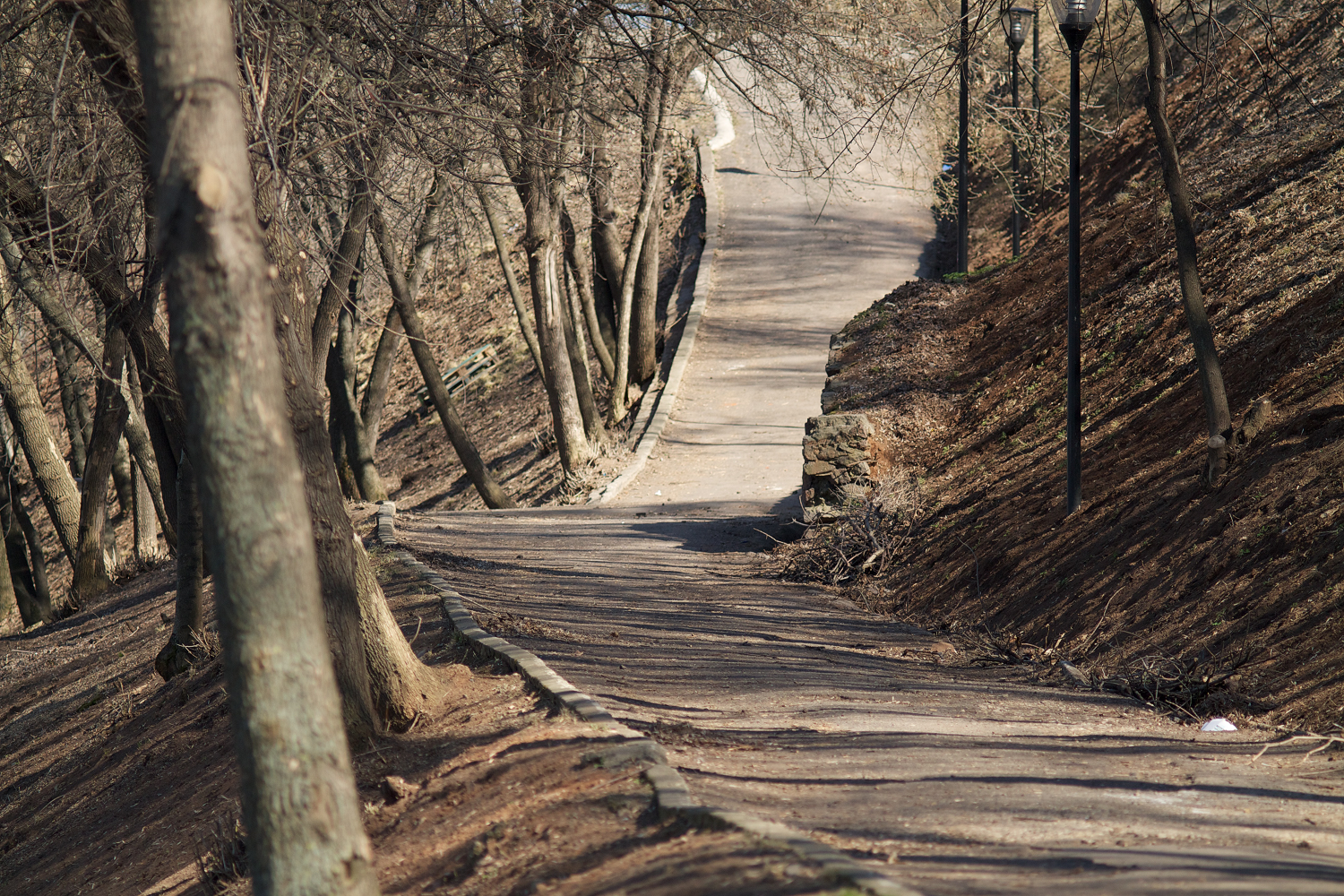
_________________
=-=Canon eos 1100D=-=Zenit-E=-=
[RMC Tokina 35-105 macro FD][CZJ Sonnar 135mm f4 Exa][Jupiter-11 135mm f4 (silver)M39][Helios 44m-6][Helios-44-2 2/58][Vega-11u m39][Industar-50u][Tair-3fs][Mir-1B 2,8/37 (ВОЗМ)] |
|
| Back to top |
|
 |
Lightshow


Joined: 04 Nov 2011
Posts: 3669
Location: Calgary
|
 Posted: Wed Mar 09, 2016 1:13 am Post subject: Posted: Wed Mar 09, 2016 1:13 am Post subject: |
 |
|
Lightshow wrote:
Great shots, there's just something about APO lenses that I love, I wish there were more of them, I only have the Leica M 90 APO Asph, Leica R 100 Macro APO, and Leica R 180/3.4 APO.
I wish that Wide Angle lenses came in APO, The shortest FL I've seen is 50mm.
_________________
A Manual Focus Junky...
One photographers junk lens is an artists favorite tool.
My lens list
http://www.flickr.com/photos/lightshow-photography/ |
|
| Back to top |
|
 |
cooltouch


Joined: 15 Jan 2009
Posts: 9097
Location: Houston, Texas
|
 Posted: Wed Mar 09, 2016 1:58 pm Post subject: Posted: Wed Mar 09, 2016 1:58 pm Post subject: |
 |
|
cooltouch wrote:
Sigma has made a variety of APO glass over the years, as has Minolta. And then there's the dozens upon dozens of APO telescopes in many different focal lengths that can be used as long telephoto lenses, albeit wide open only.
I did a google search on 'apo "wide angle" lens' and got a few APO large format lenses meant for use with digital backs, such as a Rodenstock 35mm -- but it covers only a 46mm (or so) image circle -- not really what I'd call large format. More like the old "baby" 4x4 format. Anyway, I suspect the reason why you don't see more APO wide angles is because they don't need to be. Wide angle formulas just naturally lend themselves to better color correction because everything is being squeezed together, so to speak -- including light rays.
_________________
Michael
My Gear List: http://michaelmcbroom.com/photo/gear.html
My Gallery: http://michaelmcbroom.com/gallery3/index.php/
My Flickr Page: https://www.flickr.com/photos/11308754@N08/albums
My Music: https://soundcloud.com/michaelmcbroom/albums
My Blog: http://michaelmcbroom.com/blogistan/ |
|
| Back to top |
|
 |
|
|
